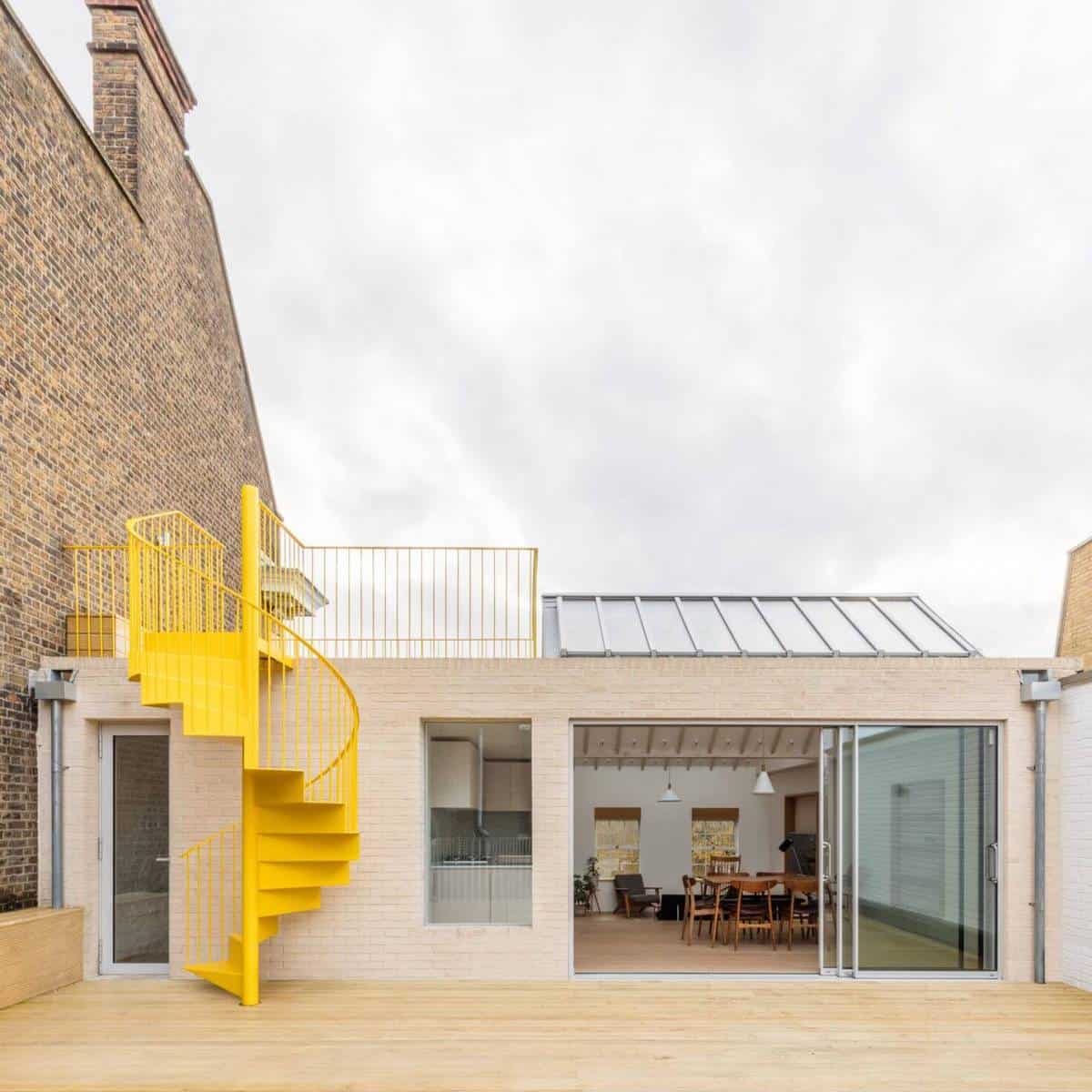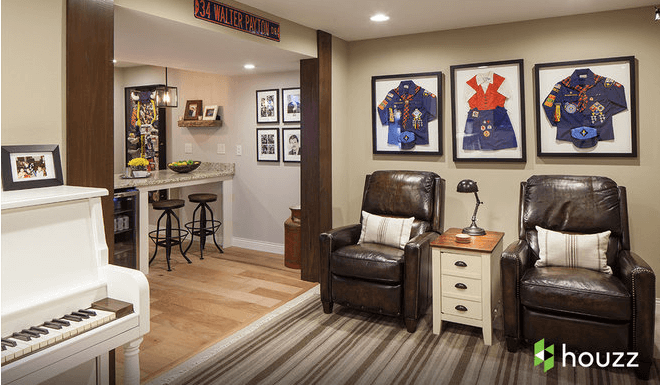We’ve used sash windows for some of the period homes we’ve worked on and not only do they look stunning and add character, but they give the home a sense of expanse and space.
We found this useful article in Houzz, on everything about Sash Windows…
Sash windows are the beating heart of any period home. They come in a range of styles and configurations and when they go wrong, they demand an eye for detail and an expert hand. From upgrading cords to fitting new sections, here’s what to consider if you need to restore yours.
Identify your sash window design
The two main styles of sash are Georgian and Victorian. Georgian windows have glazing bars and multiple panes of glass within the sashes. Victorian versions have one or two big panes in each moving sash. Later, Edwardian designs featured a mix of the two.
Sash windows can be singular, or form part of a bay. Unlike casement (with hinges) and hopper (tilting) windows, sashes have the advantage of remaining flush to the wall when open and do not impede blinds and shutters.
Compare your windows to others in your road and neighbourhood. Styles can change across areas, with variations in sills, sash horns, glazing and moulding profiles. This will help you assess if your windows are likely to be original (or based on original designs) and will inform any decisions around possible repairs and refurbishment.
Understand how sashes work
Sash windows comprise an outer frame or box, and usually a pair of vertical sliders or ‘sashes’. However, they can be fixed so neither of the sashes moves, or single hung, where only one of the sashes moves, usually the bottom one.
Traditional sash windows operate using a pulley and counterweight system. Cords are connected to weights that sit inside the frame and counterbalance the movement of the sashes, holding them in place when they’re pushed up or down.
Be aware of what can go wrong…
Sash cords can break over time, resulting in the weights being lost in the sash box. If there are gaps around the sashes, the windows can rattle, let in draughts and leak. Poor redecoration is also a factor and can cause windows to stick.
General neglect and poor maintenance causes the wood to decay and rot, but thankfully timber is, for the most part, repairable.
…and what’s involved in fixing it
Replacing the cords and weights inside the box frame is one of the more straightforward and least costly repairs associated with sash windows.
“More extensive repairs often require sectional replacement,” Adrian Thompson says. “This can include renewing the lower sill, replacing sash frames or renovating the existing box frame.”
“The timber windowsill gets the brunt of the weather, so can often require a lot of renovation work,” Chris Herrington agrees. “The rot seeps up the window from the sill, causing the decay – and sometimes a completely new sill and lower box assembly is needed.”
For any sectional replacement work like this, the window is taken apart, any rotten timbers are routed out to get back to the sound wood, and new timbers are spliced in. Once the work is done, the window is re-hung and balanced so it works smoothly.
Find a reliable tradesperson
“Period properties require exceptional attention to detail, as windows were not made to a standard specification,” Richard Dollar says. “Make sure the company you choose has experience of working on similar properties. Are they members of any accredited bodies?”
Windows are an important element of your home and can involve significant expense. “Ask your supplier for written referrals, visit their workshop and check their credentials,” Adrian says. “If the suppliers are based miles away, how will they service any guarantee work?”
Get three or four quotes for any work, Chris advises, “but make sure you’re comparing like with like when assessing price differences. And ask for references from your chosen supplier. They should have previous customers who are happy to share their experience with you.”
It’s possible to install replacement double-glazed sashes into existing box frames using slim glazing panels. “Our workshops make these to match the profile of the existing sashes,” Chris says, “and you can choose from a range of timbers and glass types, such as acoustic or thermal.”Be aware that while fitting double-glazed sashes into an original box frame does not constitute the wholesale replacement of an original window, the work may still need permissions, depending on where you live.“It will require planning consent in listed buildings and some Article 4 conservation areas,” Richard says.
Fit draught-proofing
Draught-proofing is important because of the way sash windows are designed. “Gaps around the sashes mean they can rattle and let in draughts, rain and dust,” Chris says. “Installing a draught-proofing system in the gaps solves these problems.”
Another option is timber secondary glazing, Richard says. “This involves fitting an additional glazed screen on the inside in front of a sash window. It can improve thermal efficiency and reduce noise, and is often a popular choice in listed buildings, where double glazing is unlikely to be approved.”
Shutters and window treatments can also contribute to energy efficiency, Adrian says. “Fully closed plantation shutters and interlined curtains can make a big difference in winter.”
Consider the costs
Costs will vary enormously depending on the condition and size of your windows, and the complexity of the work and materials involved. For the straightforward replacement of cords, weights and locks, expect to pay from around £300 to £450 per window.
Renovation and upgrades, including draught-proofing, double glazing and/or fitting new sashes into existing frames can cost anything upwards of £1,000 to £1,500 per window.
For renewals involving a full back-to-brick replacement being supplied and fitted, costs are likely to start at around £2,300 per window.
Decide if it’s better to repair or replace
As well as cost, condition will be a key factor in whether you choose to repair or replace a sash window.
“We like to think we can save a window that looks beyond repair,” Chris says, “but it depends on customer preference and budget. Original timber is far better quality than the wood we get today, so with a little bit of care and attention, plus some ongoing maintenance, timber windows can last another 100 years.”
If the frame is still in good condition, you may be able to just replace the moving parts, Richard says. “One advantage of timber windows is that they can often be repaired if issues are dealt with promptly.”
“There’s no golden rule around repair versus replacement,” Adrian adds. “The important thing is to ensure any work is faithful in style, appearance and operation to the original, and maintains the integrity of the building.”
Gen up on conservation area rules
If your home is listed or you live in a conservation area, speak to your local planning office about any work you want to carry out on sash windows.
“In listed buildings, it’s always preferable to renovate rather than replace,” Chris says. “However, we are seeing more cases of slim double glazing being authorised for installation in listed homes.”
Draught-proofing or changing the sash cords and weights will not require Planning Permission, Richard says, “but more major repair work, such as re-glazing or installing new sashes into existing frames, may.” If you’re unsure, speak to your local council.
“Consent should be sought for double glazing and renewal,” Adrian says, “but works in conservation areas should not be an issue, as long as homeowners stick with timber, and the windows end up with the same appearance and design as the originals.”
Keep up with regular maintenance
Once any repair or restoration work is done, it’s important to check timber and paintwork frequently.
“We recommend painting or varnishing external timber sills annually to make sure they’re weather-tight,” Chris says.
Open sash windows often to prevent them from sticking, Richard advises. “Check any handles, trickle vents and working parts every year and lubricate them with silicone spray or light oil. The timber framework of windows should be cleaned thoroughly every year, too, including the working parts.”
For 10- to 12-year repainting cycles, Adrian recommends modern microporous paint. “Then, other than cleaning traffic film off the paintwork and occasionally oiling the pulley and locks, sash windows will be relatively maintenance-free,” he says.




